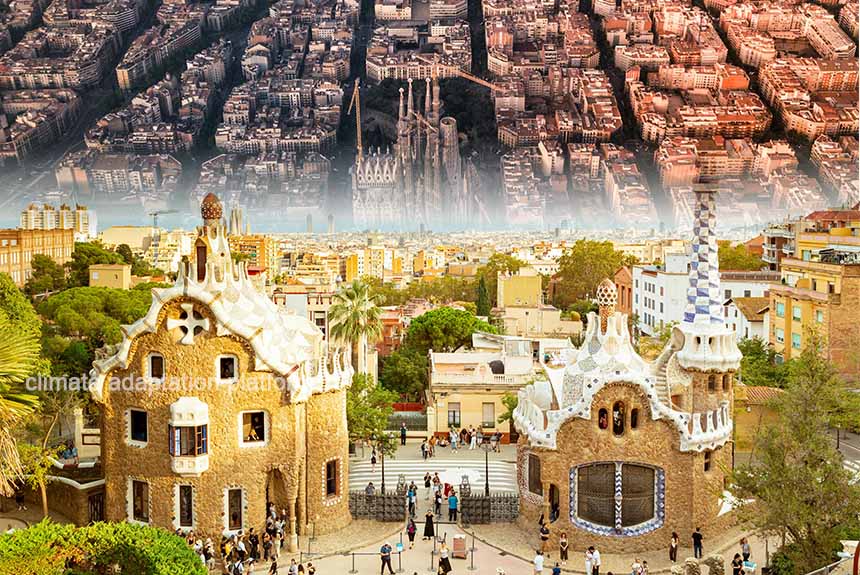The start of the 20th century has seen a dramatic rise in automobile production and usage in the US and many countries worldwide.
Cars have become symbols of personal freedom, and owning one means that you have the means to be independently mobile.
This has resulted in cities designing infrastructure around cars. In the US, trams have been torn down in favour of roads and highways, creating car-centric urban hubs and societies.
However, the growing calls for sustainability and the need to adapt and mitigate the effects of climate change are slowly changing this trend.
Congestion, pollution, unsafe roads, and lack of green spaces are some of the problems cities are facing. Some of us can still recall when we played on the streets or walked to school with our friends, which can bring enormous health benefits.
While these experiences can still be found in some urban places, other metropolises have become too risky for such activities and rely heavily on cars for daily tasks and chores.
Cities like Barcelona have proposed a solution to reclaim the streets for human use and for kids to play safely in them. They call them “superblocks”. The approach pioneered by the Spanish city frees up public spaces to promote walking and cycling.
Recently published research in the Environment International Journal, “Changing the Urban Design of Cities for Health: The Superblock Model,” finds that creating superblocks in Barcelona, Spain, where the study is conducted, has helped reduce harmful environmental exposures (air pollution, noise, and heat) while simultaneously increasing physical activities and access to green space, and thereby providing substantial health benefits.
Creating these superblocks can also mitigate climate change impacts, reduce reliance on cars and motorized transport, increase the life expectancy of the city’s adult population by almost 200 days and create an economic growth of nearly 2 billion EUR.
How does this superblock work? The Conversation article, “Superblocks are transforming Barcelona. They might work in Australian cities too,” explains that large “superblocks covering an area of around 400m by 400m are created from residential blocks of 150m by 150m. Normal, busy streets currently surround these residential blocks.
Outside the superblocks, the city’s regular traffic is accommodated on streets with a maximum speed of 50km/h. Within the superblocks, cars are banned or restricted to 20km/h, priority is given to walking and cycling, and open space is reclaimed or created from parking.”
Within the superblock, people experience a pleasant streetscape where they can walk and mingle without the constant fear of getting hit by cars.
The Urban Developer article “Time to Reclaim the Streets for Humans” notes that superblocks can also be designed for kids. These blocks are typically about a square kilometre area retrofitted to existing suburbs to create safer, quieter, and more play-friendly streets. Superblocks for kids should also be clustered to provide secure access to local amenities and public transport.
Low-cost filters can be placed strategically to protect these superblocks for drivers to discourage motor traffic.
These filters can include pocket parks or mall areas of community green space, gates or planters – they can deter cars from entering but have room for walkers and cyclists, diagonal filters for four-way intersections, end-of-street filters: open cul-de-sacs to walkers and cyclists, rising bollards to allow bus access, banned turns or one-way streets.
Would these superblocks work in other cities around the world?
Yes, it can. Some cities in the US have attempted car-minimizing approaches like this, but they are usually in wealthy metropolises with lots of existing businesses.
Zoning regulations like parking requirements could still encourage the presence of cars, and wide streets typical in the US can discourage walkability in some cities.
As the study demonstrates, superblocks encourage city growth. Residents become healthier and are encouraged to have an active lifestyle. When people walk more, business sales increase, which they can’t do if roads are filled with cars.
Where to start?
The research highlights the importance of listening to communities and kids when designing neighbourhoods. In some cases, the idea of superblocks can encounter initial pushback, but as soon as residents realize its benefits, their opposition will quickly melt away.
The article in Smart Cities Dive, How Public Space Makes Cities More People-Oriented, makes a case for why we need to reclaim urban spaces for people. “In order for cities to be vibrant and safe places, we need to think of them as systems of interdependent parts and complex connections, as interactive and social spaces. Reclaiming urban spaces for people is part of how we can humanize our cities and make our streets more communal. Public spaces are often more than anonymous places that can be replaced with one another: the meetings and exchanges that occur here affect our relationships with each other, giving meaning to our communities and urban landscapes.”
Source:
Time to Reclaim the Streets for Humans. (2022, October 7). The Urban Developer. Retrieved from https://www.theurbandeveloper.com/articles/superblocks-urban-design-streets-for-kids
Love, P. & Stevenson, M. (2019, September 18). Superblocks are transforming Barcelona. They might work in Australian cities too. The Conversation. Retrieved from https://theconversation.com/superblocks-are-transforming-barcelona-they-might-work-in-australian-cities-too-123354
Mueller, N., Rojas-Rueda, D., Khreis, H., Cirach, M., Andrés, D., Ballester, J., Bartoll, X., Daher, C., Deluca, A., Echave, C., Milà, C., Márquez, S., Palou, J., Pérez, K., Tonne, C., Stevenson, M., Rueda, S., & Nieuwenhuijsen, M. (2020, January). Changing the urban design of cities for health: The superblock model. Environment International. Retrieved from https://www.sciencedirect.com/science/article/pii/S0160412019315223?via%3Dihub
How Public Spaces Make Cities More People-Oriented. (2017). Smart Cities Dive. Retrieved from https://www.smartcitiesdive.com/ex/sustainablecitiescollective/how-public-spaces-make-cities-more-people-oriented/1076931/



Leave a Reply